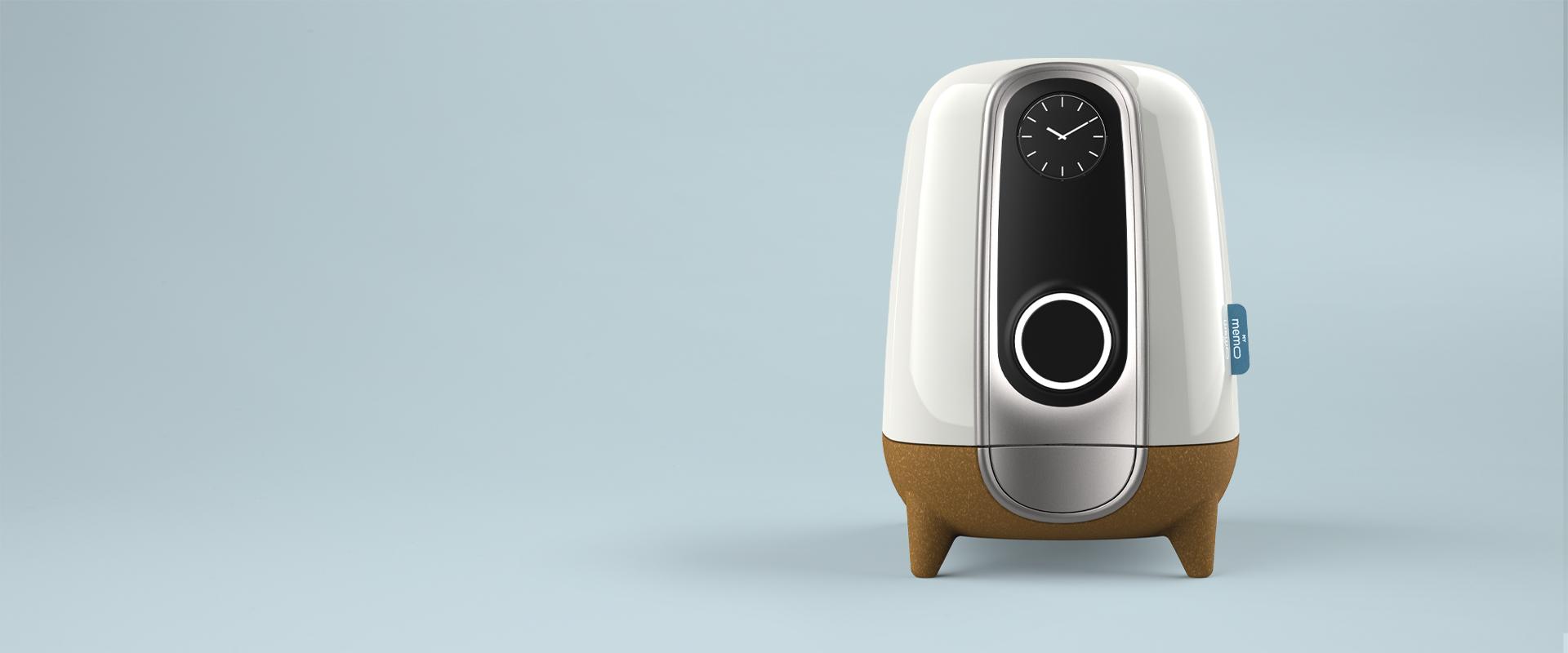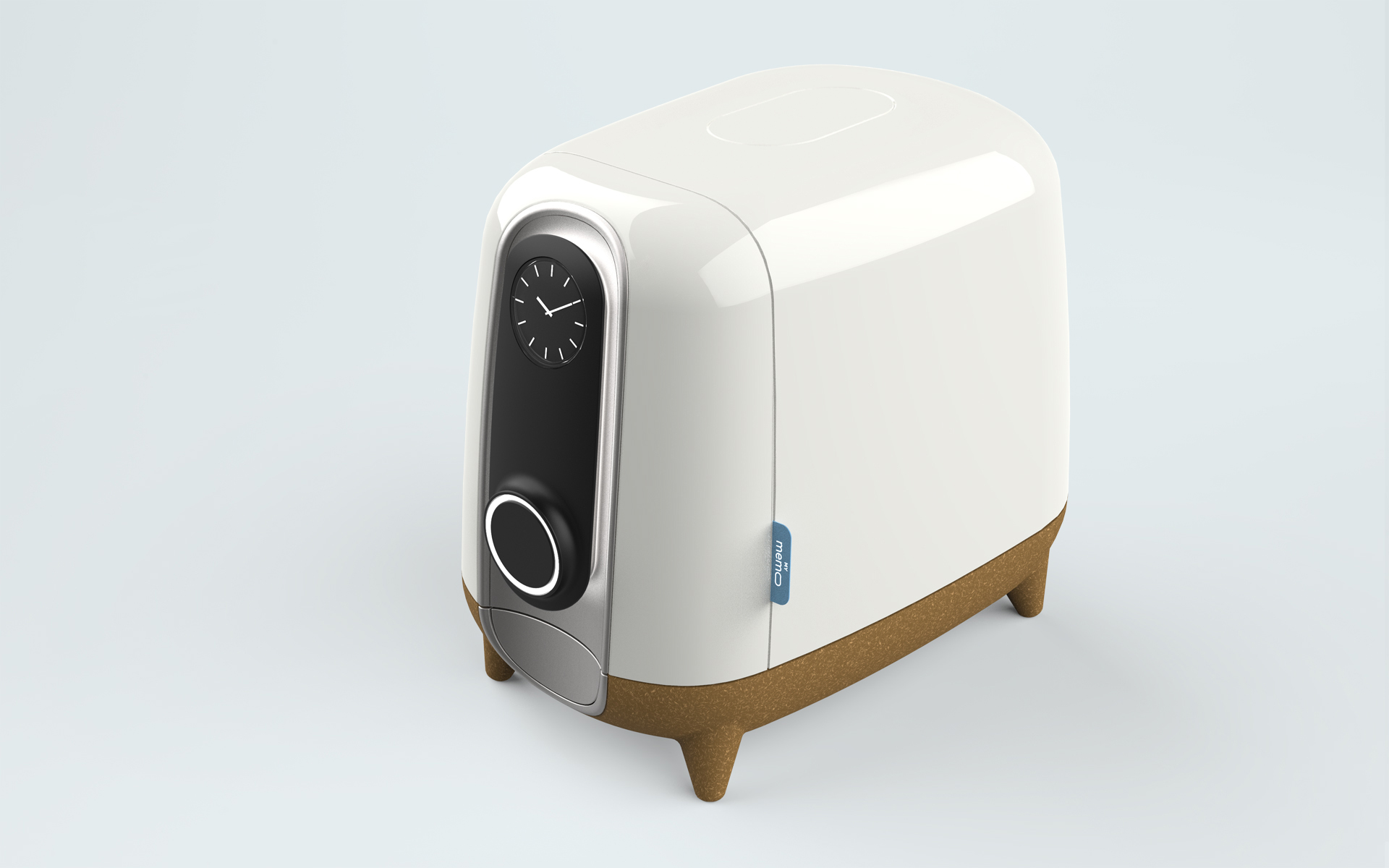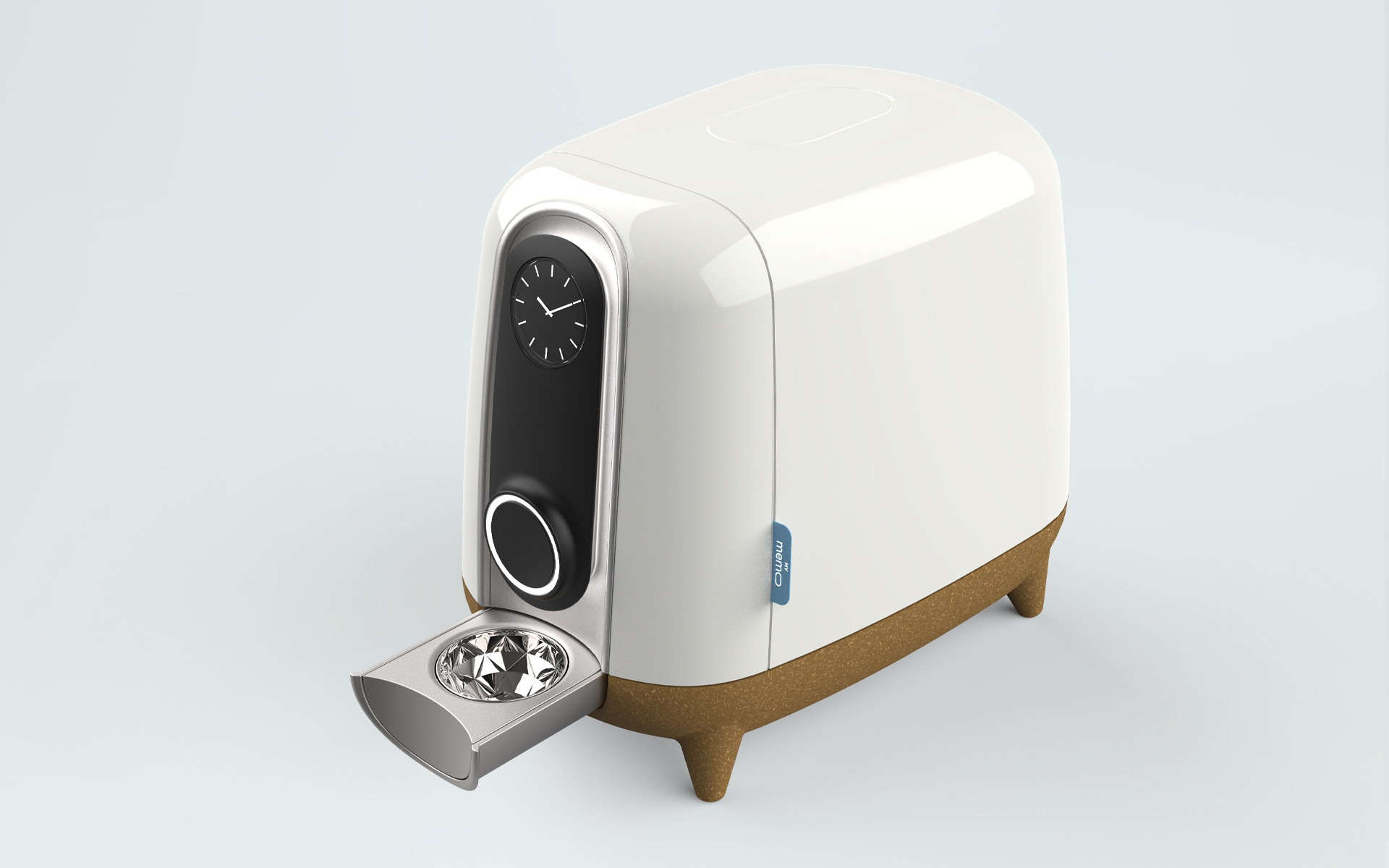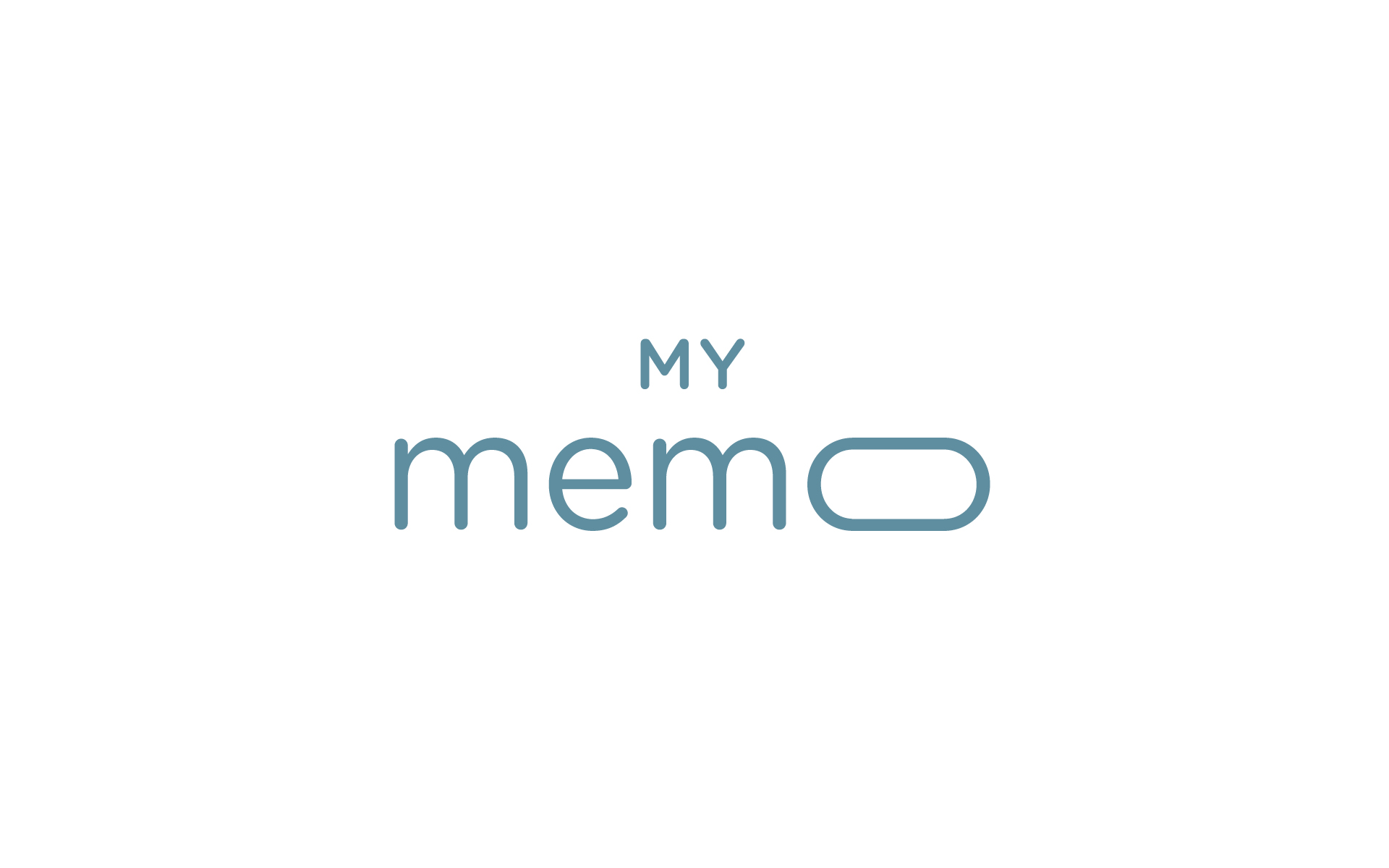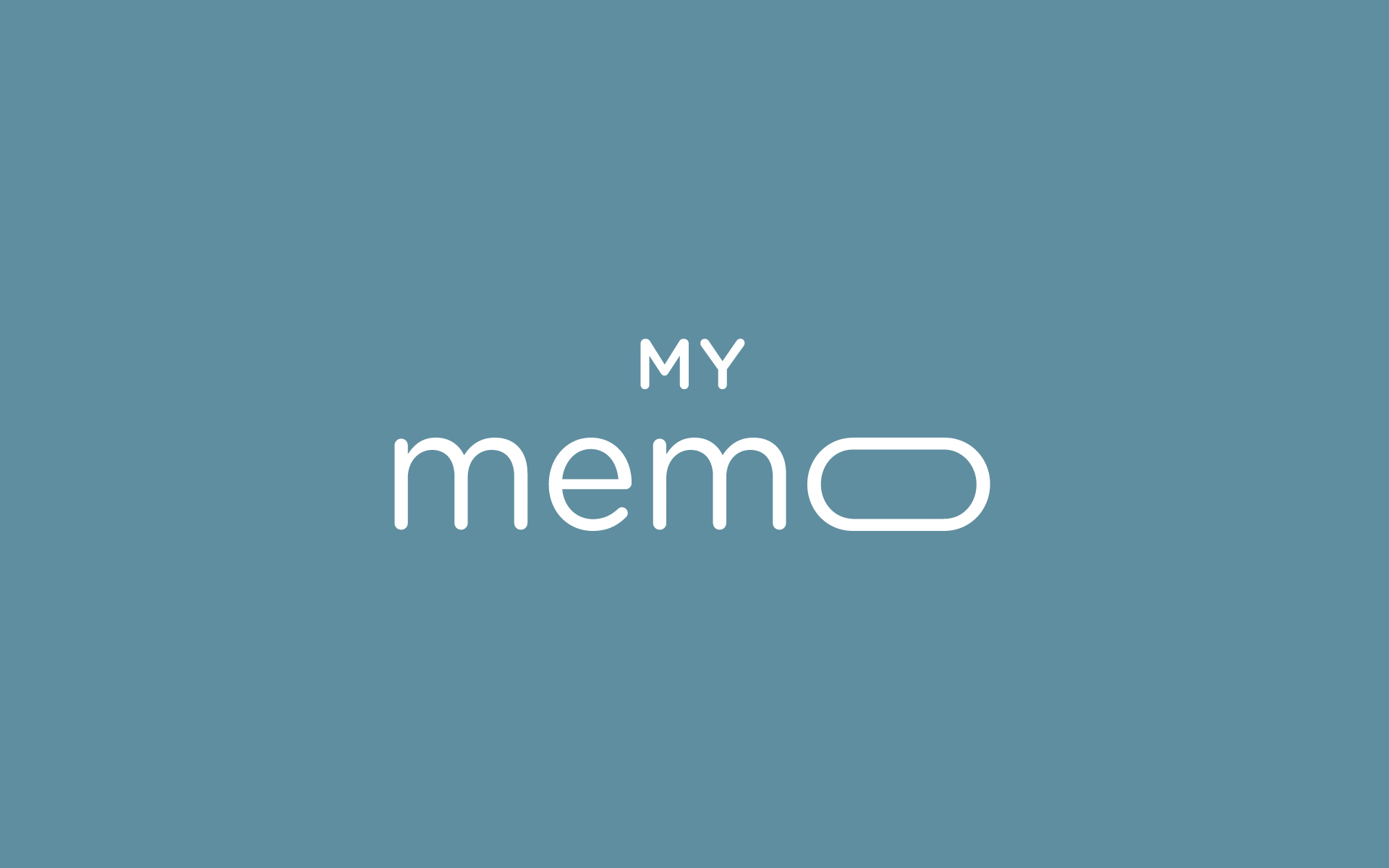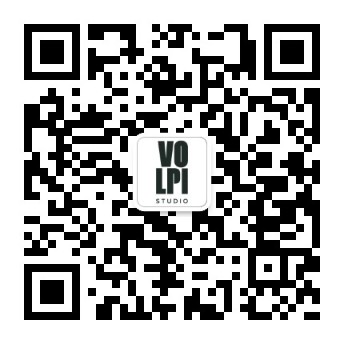Like millions of people affected by a chronic disease, patients from Milan’s Anticoagulation Centre found it difficult, in the long term, to stick to their daily therapy, often consisting in several medications to be taken every day at regular intervals and in precise dosages. Yet, complete adherence to therapy is key to protecting those patients’ lives. Two doctors from the Centre, Roee Dvir and Giorgio Pizzagalli, asked Studio Volpi to come up with a device that would help them make sure their patients kept taking the right pills in the right dosage at the right time, day after day, every day.
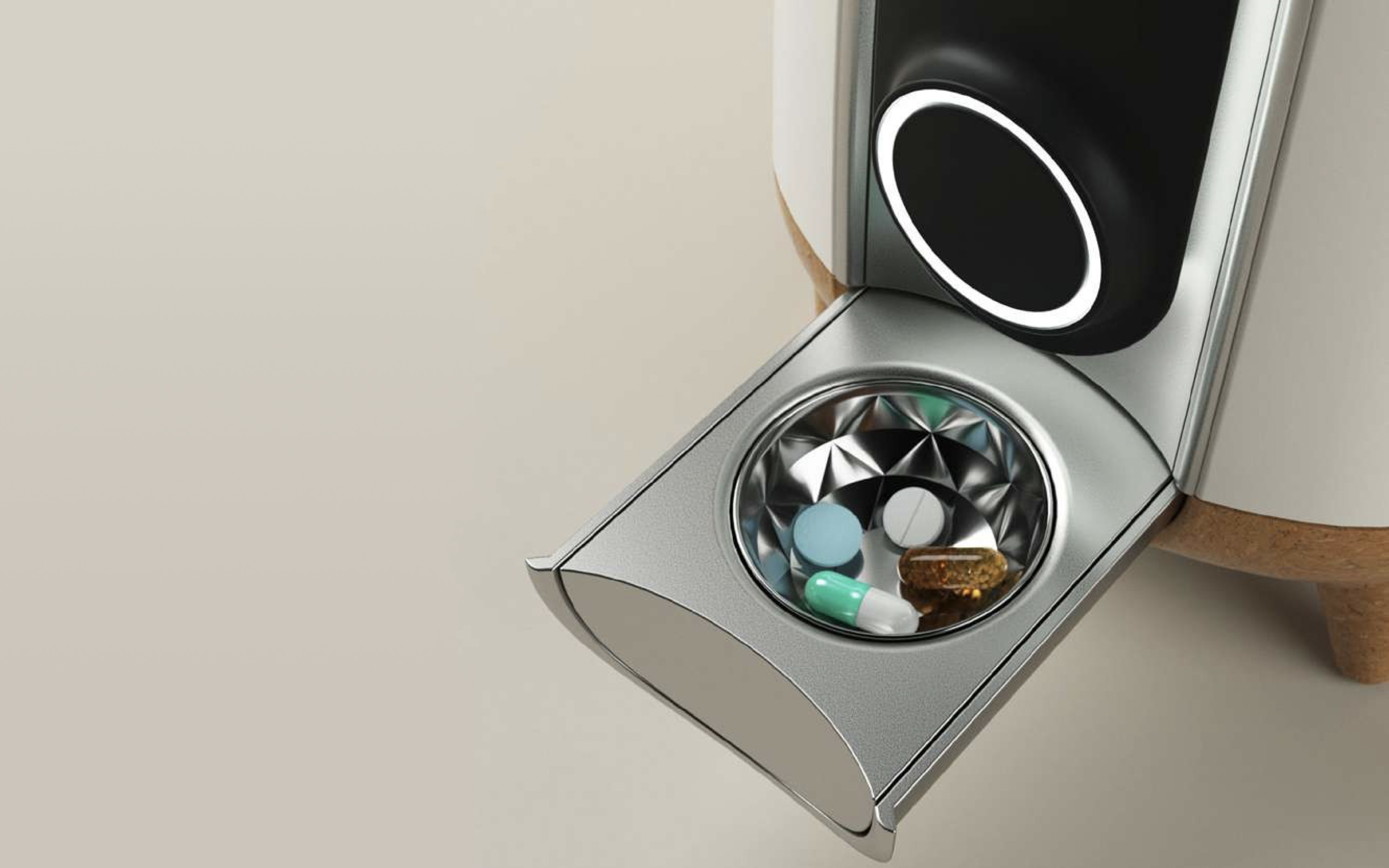
A simple brief for a complex task
As medical doctors, Dvir and Pizzagalli have had the opportunity to deeply study problems regarding therapeutic adherence so briefing was focused, simple and straightforward: above all, creating a failsafe, precise and reliable device that would dispense the right amount of the right kind of medication at the right time. It also needed to be “connected” for caregivers and doctors, to remotely monitor the patients’ compliance with the therapy. They would also need to be able to modify it at any time, if needed. Moreover, Dvir and Pizzagalli asked for “a medical device that doesn’t look like one”, so patients continue therapy for chronic conditions for long periods of time. Finally, cost was a crucial factor too, because the more people were able to afford the machine, the more lives could be safeguarded.
As simple as the brief sounded, the task was indeed quite a challenge. The Studio had to draw on its multiple competences to come up with a solution that was technically flawless but also extremely user-friendly and pleasing to the eye. Looks were important as one of the two partners, Roee Dvir, was a Design enthusiast. And that wasn’t all, the Studio was also to propose a name for the contraption, create a web-site and produce a presentation video.
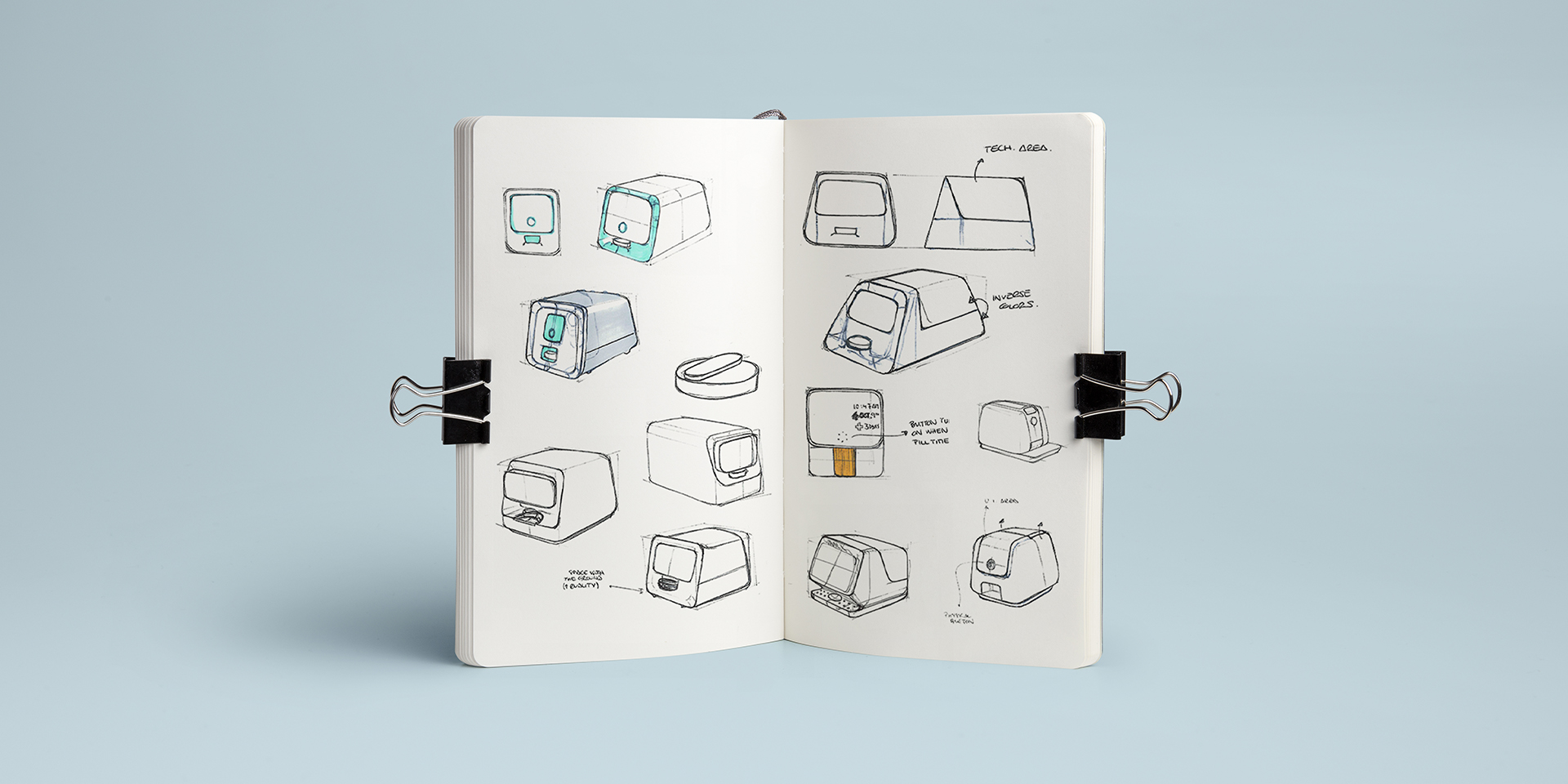
Precision engineering
Studio’s engineers first concentrated on the main task the dispenser needed to perform: safely holding a supply of the various medications, then selecting and picking the correct combination of pills at a given time, and handing them to the patients.
Having an in-built electronic clock trigger the mechanism at the desired time, and repeating the operation every day or until instructed, was relatively easy. Having containers, each holding a different type of medication, rotating into position for pick-up according to the therapeutic plan wasn’t that big of a challenge either, but the actual pick-up method and mechanism had to be given a lot more thought.
There was no room for error here, as a single mishap could lead to potentially catastrophic consequences for the patients. First, gravity was considered, with a hatch positioned at the bottom of the pill containers opening up for the precise amount of time needed to let the exact desired number of pills fall through. Unfortunately, that method wasn’t reliable enough, while also needing lengthy and complicated settings every time the shape or weight of the pills changed.
The solution came in the form of vacuum suction cups, which are highly precise and are not bothered by the size and shape of the object being picked up, provided it keeps within a certain range. Only, to pick up pills weighing a couple of grams and fit into a machine that’s barely larger than a toaster, they needed to be miniaturized, and so did the entire system.
The gunslinger paradox
In effect, existing expensive models on the market tended to be “fast drawers”, as that feature seemed to be mandatory for such products. However, failed pick-ups could result, in which case the machine would simply display an error message. Wyatt Earp, one of the most famous and faster-drawing gunslingers in history, once said “The most important lesson I learned... was that the winner of a gunplay usually was the one who took his time.” A paradox if we consider that one generally thinks at shootouts as a game of “who draws first wins”.
The solution was in fact simple: taking the time, just like Wyatt Earp, but by preparing in advance.
The machine would get into action some time before medication was due and fill an internal pre-delivery cup with the correct combination of pills and capsules. Once time is up, it would ring an alarm, in fact a quite pleasing chime, and flash a light on the front panel to alert the patient. In turn, the patient would simply need to hit the only button on the front of the dispenser, this to make sure the alarm is heard. The pre-delivery cup would then empty into a diamond shaped tray which would automatically spring out and gracefully present the day-pick to the patient. Failure to respond to the alarm or to pick up the medication within 20 minutes, would trigger an alert to caregivers. The unused load would then be kept in a separate container.
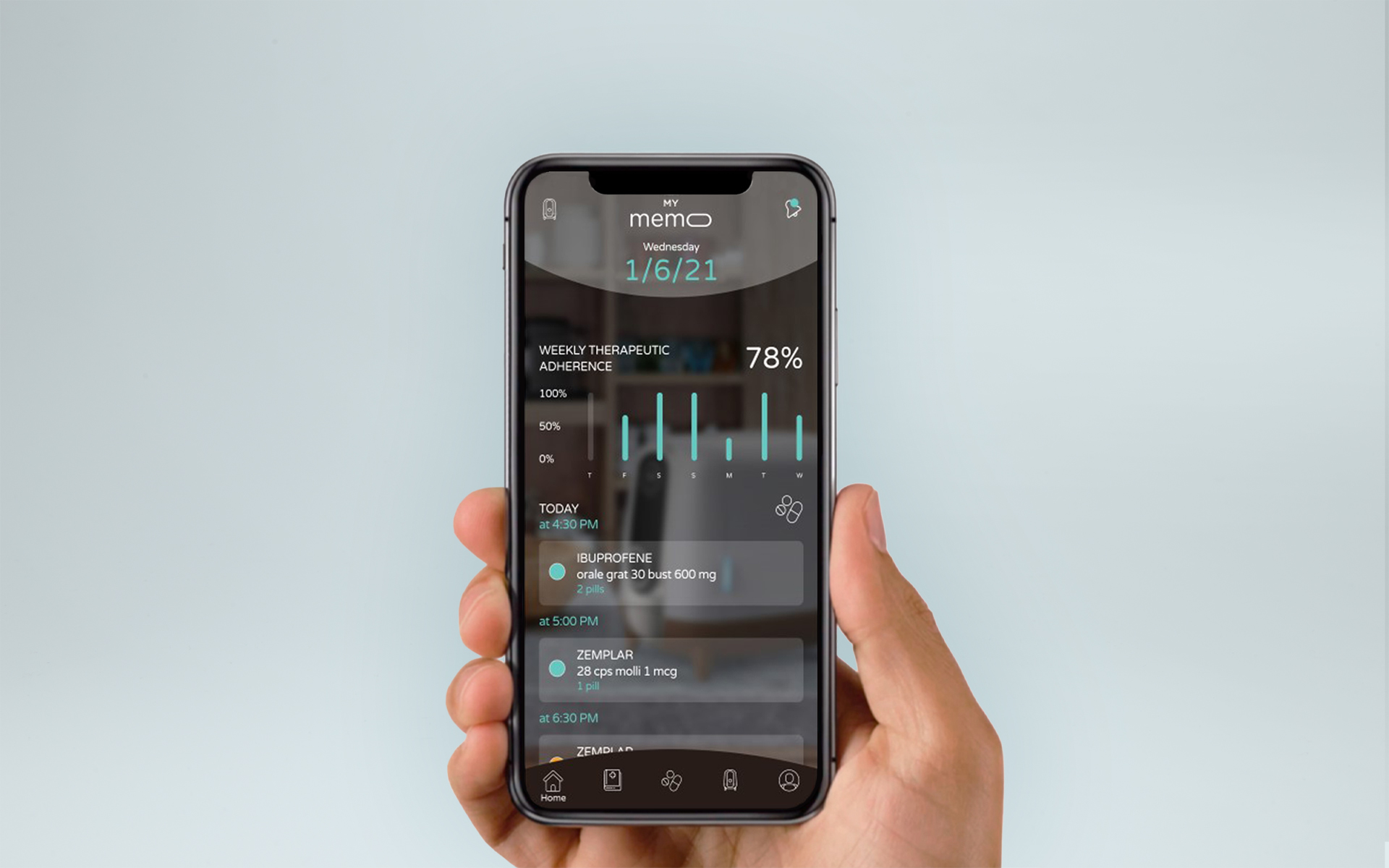
Connected and modular
Connection to caregivers and doctors through an app is one of the innovative features of Mymemo. Far from being a gadget, it helps monitor the patient's compliance with the therapy in real time. It also allows for the therapy, for instance the type of medication and the dosage, to be modified remotely and instantly. Mymemo can hold up to 4 different types of pills, tablets or capsules. They can be filled each with a different dosage of the same medication or hold different kinds of medication.
It is a fact that chronically ill patients start off by taking only a few pills every day but, in time, need to take up to 8 or 10 different drugs. This is why Mymemo can manage up to two “slave” units for up to 12 different pills or capsules. Mymemo is the ONLY automatic pill dispenser in the world (company patent). This unique modular design is one of the key features of Mymemo – a tailored approach based on patient's needs.
Everything is managed through an intuitive, user-friendly app (MymemoAPP), from filling the containers with up to 3 months supply of medication, to setting the therapeutic plan and modifying it at any given time. Mymemo has an internal GSM, Bluetooth and SIM card so it does not require patients to have a home Wi-Fi system.
As for power, Mymemo plugs into the mains but also has a buffer battery guaranteeing an extra 24 hours energy supply in case of cut-offs.
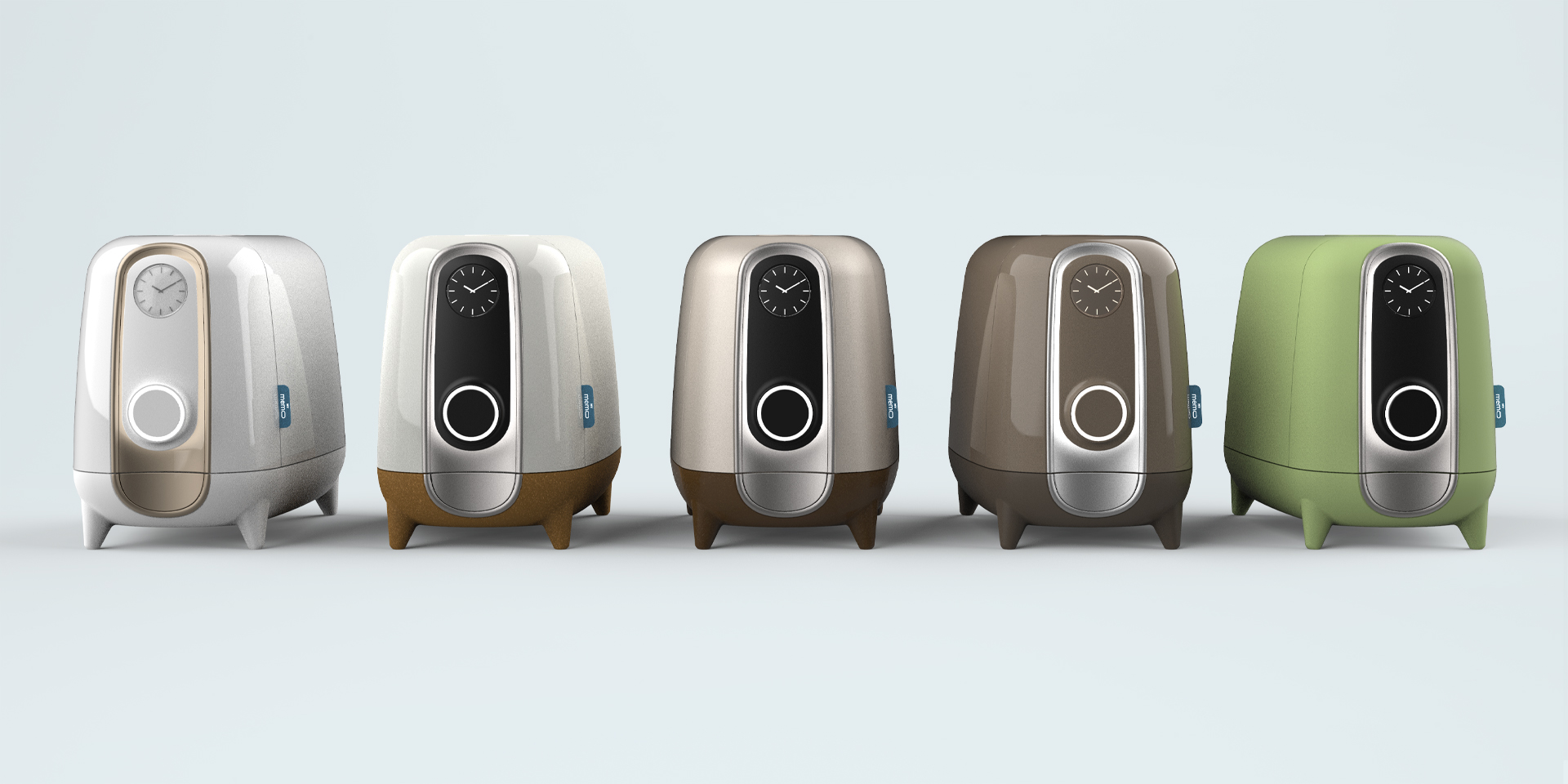
Halfway between a toaster and a piggy bank, simply adorable
Design was an important part of the brief, and as is common practice, the Studio presented three different design alternatives, going from mainstream to stylish, to wildly creative. Surprisingly, the clients went for the third one, as they particularly appreciated the fact the object didn’t in the least resemble a medical device. It was a friendly looking counter-top appliance halfway between a toaster and a piggy bank. Simply adorable.
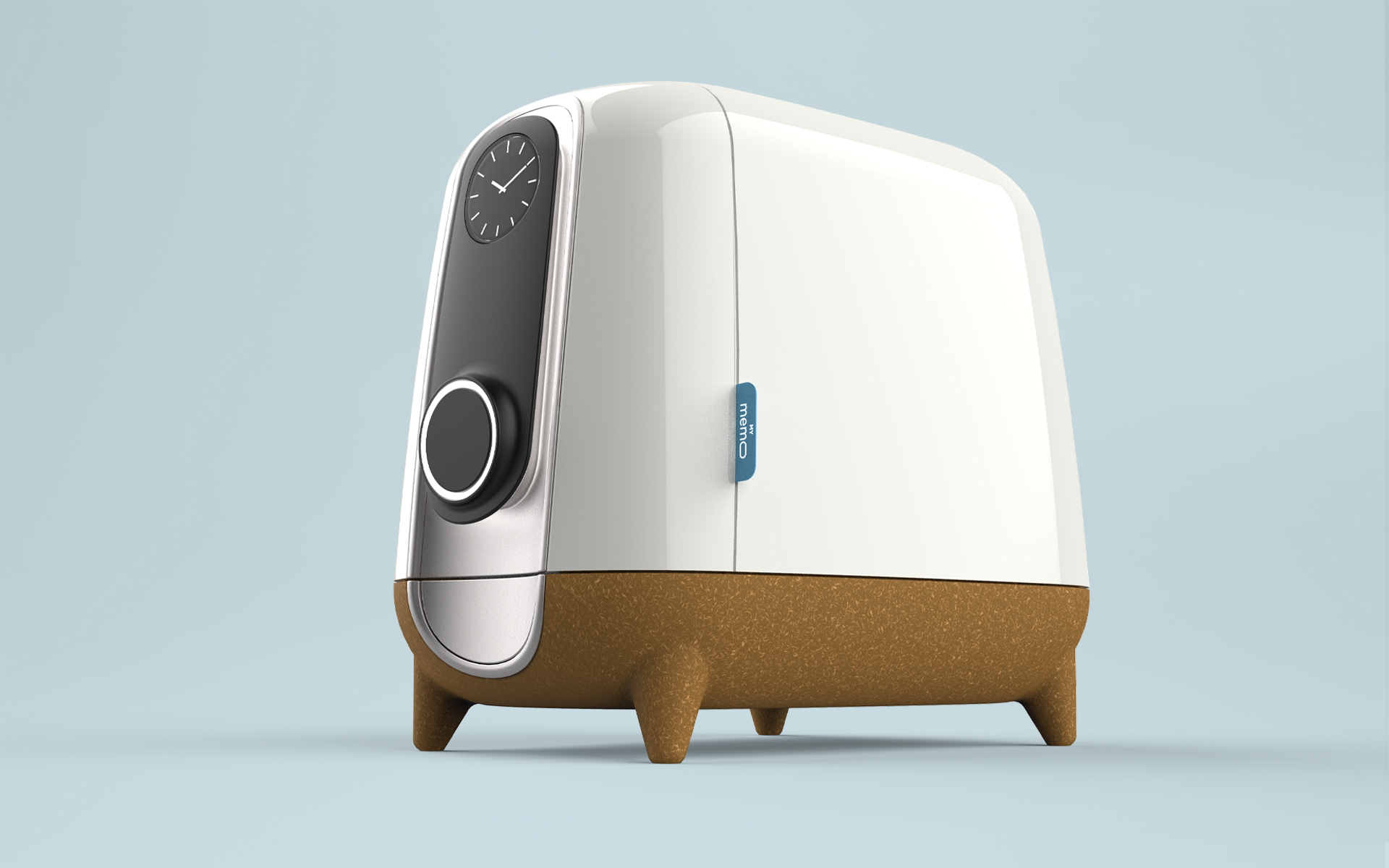
“Mymemo” was the final choice for the name, as it simply describes the principal function of the device, “reminding” patients to take their medication. For this it features an analog clock on the front panel, in fact not quite analog as the hands are digitally reproduced through e-ink like in e-books. The clock dial can thus be used to display messages from doctors and caregivers. The only other feature on the control panel is a large, round button that flashes a light when it is time to take the medication or, with different colored lights, give other kinds of signals.
The “memory” theme was particularly important because the entire issue revolved around the patients’ ability to remember taking their medication. But by constantly worrying about “remembering”, they’d also remain prisoners, in their minds, of their chronic condition. Freeing them from the burden of such responsibility by delegating the “remembering” to a machine, would give them a huge mental break from their illness, with all the beneficial effects that would ensue.
Memorable branding
The Studio then proceeded to create the matching, coordinated suite of branding elements, such as the logo, the website and the video.
The logo needed to reflect the rounded, soft and essential design of the machine. Rather than adding further elements to it, it was decided that the name itself would constitute the logo, thanks to a particular typeface and with the final “o” of Mymemo stretched out to form the outline of a capsule. Simple, effective, lovable.
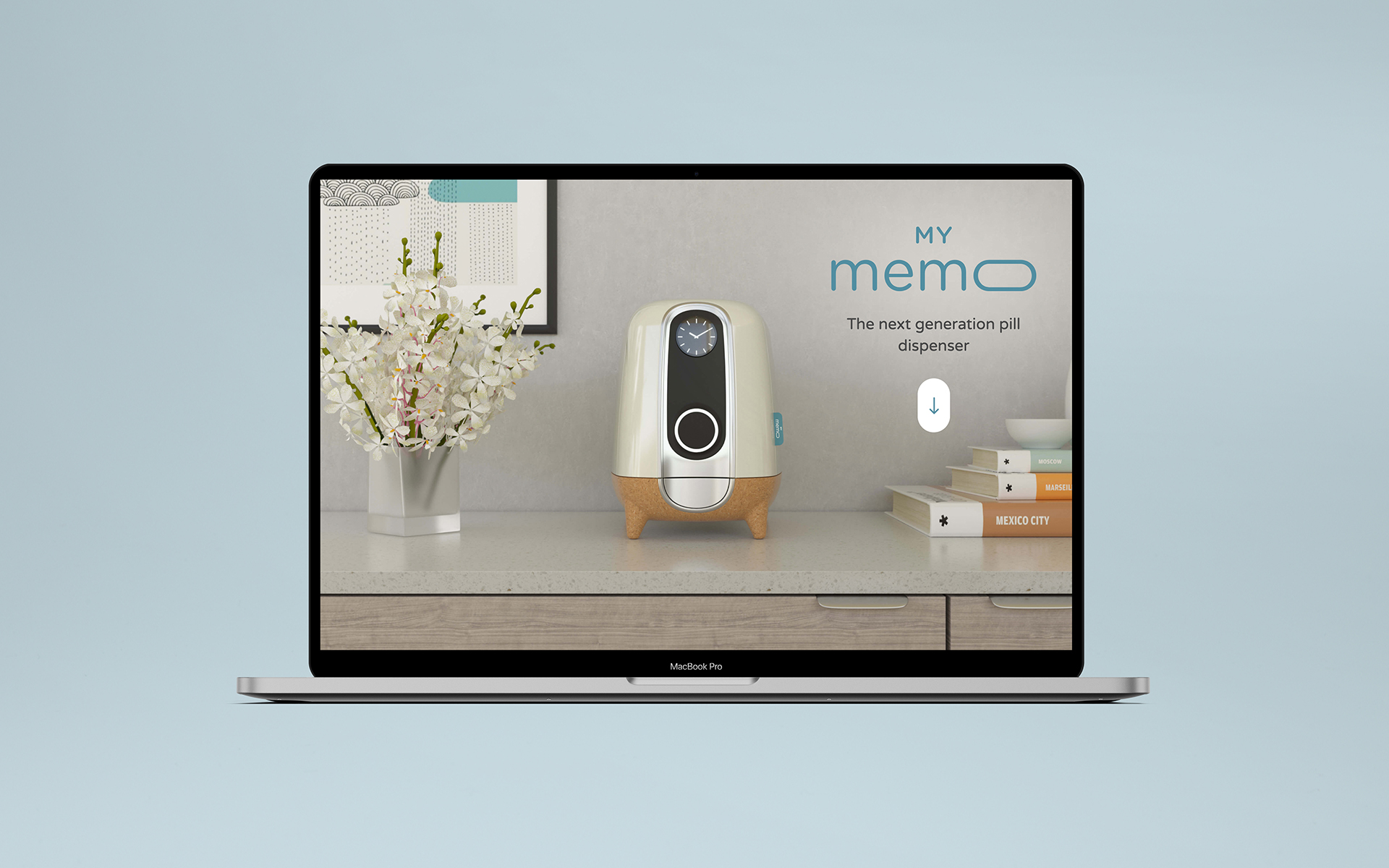
The website was designed to be very easy to navigate by both healthcare professionals and patients, who might not be excessively computer-savvy: a modern, single scroll-down page illustrating both the technical features of the apparatus and its benefits. Particular attention was given to design. The site needed to stress the pleasant, familiar aspect of Mymemo and how well it would integrate into any home without looking in the least like an intruding medical device. At the same time, it had to be convincing as to Mymemo’s total reliability and precision.
Finally, the video was developed along the same lines, with soft colors and a relaxed pace to describe, with the help of 3D animations, how the machine works and how easy it is to operate. On the patient’s side it draws on the emotional sphere, while tending to remain factual and professional in the technical descriptions and in illustrating benefits for doctors and caregivers.
A scaleable, complete health monitoring system and lifeline
If it was first created for patients receiving oral anticoagulant therapy, Mymemo was designed to be used by ANY patient on a long-term therapeutic plan, in particular the elderly who also tend to suffer from memory problems. It would help those patients maintain their independence, while being constantly monitored, with positive effects on their morale and ultimately on their general condition.
As a possible future development, Mymemo can be used as the central element of a system handling several wearable devices to monitor vital parameters such as heart rate, O2 saturation and blood pressure, on top of performing its daily duties of dispensing medication, thanks to its internal GSM and Bluetooth. In such sense, updates to the Mymemo APP can be issued regularly and cost-effectively.
With design and engineering joining forces to make a difference in the lives of many, Studio Volpi is proud to having contributed to the creation of Mymemo: a device that is highly technological - and as such, required the full spectrum of the Studio's multiple competences - but that is ultimately affordable by and beneficial to a vast number of patients.


